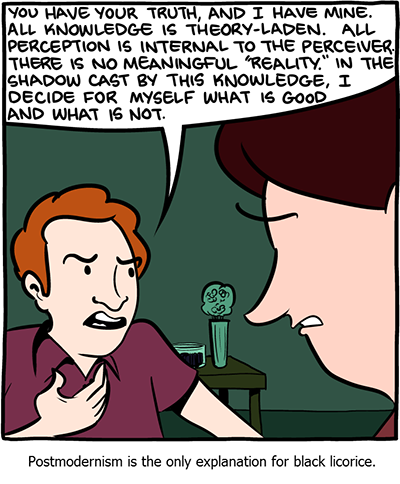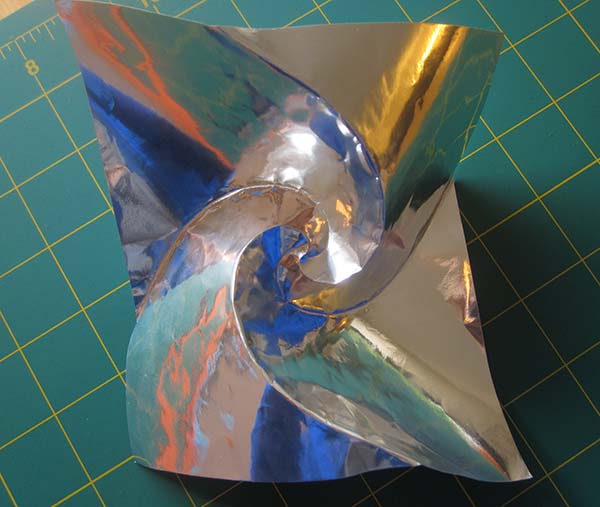Ever since I started blogging in 2007, one of the boogeymen of the skeptical movement was so-called postmodernism. Postmodernism, as skeptics understood it, was an ideology where anything goes. It was extreme moral relativism. It was the idea that truth itself was a social construct. It was the idea that no one could know anything, and yet people could have their own personal truths, which may differ from one another. In short, it was one of skepticism’s antitheses.

Source: SMBC. I think the best way to describe the skeptical concept of postmodernism is by showing how skeptics choose to portray it in parodies.
Even in 2007, this seemed kind of sketchy to me. I recall writing a post titled “What’s with postmodernism?” wherein I complained that the term was inconsistently defined, and trusted sources offered a completely different picture of what postmodernism really was. Now that I have more experience in academia, and a much greater degree of cynicism about the skeptical movement, I feel more confident in simply calling bullshit. Postmodernism is a villain invented by skeptics, originally based on a real thing, but so far abstracted from reality that it may well be called mythology.

